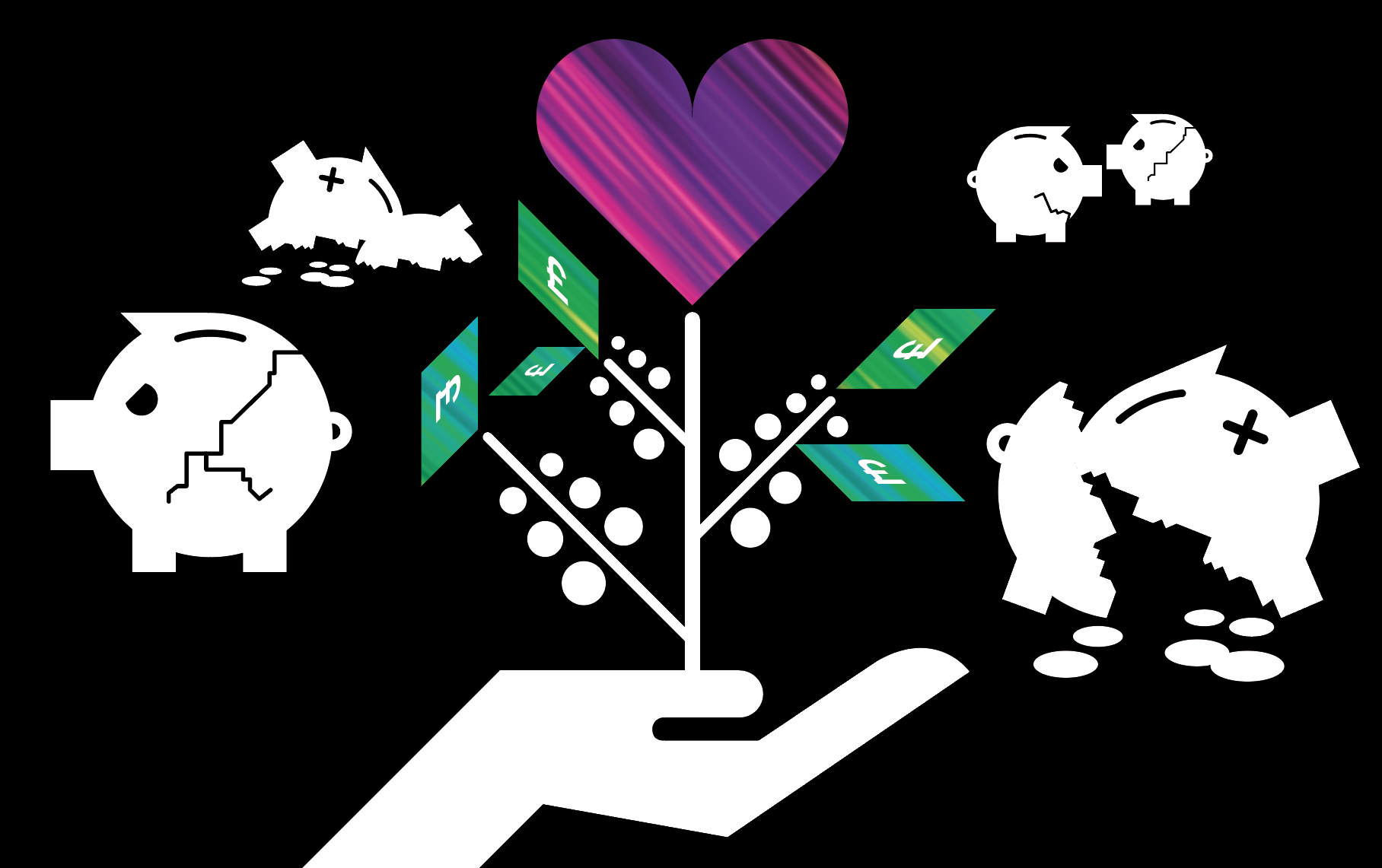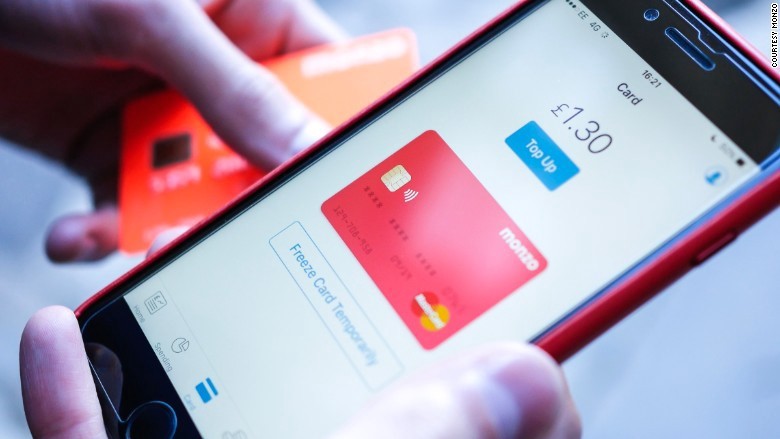
Banking is boring, banking is a chore, banks are evil, etc etc. A few years ago this would have been the default view on the banking sector. It seemed that at no point were any of the big banks trying to make banking into an experience, why would they? What would be in it for them?
Recently, one company has dared to challenge the big banks: Monzo. In this blog, I want to explore how they managed to gain traction in a market dominated by financial giants, and perhaps more importantly, what your brand can learn from their approach.
The future of banking?
UK challenger bank Monzo was founded by Tom Blomfield at the start of 2015 in East London (of course).
Monzo started life as an app linked to a pre-paid MasterCard. Customers could load money on to the card via the app, using it as a spending card to help manage their finances. As with most tech start-ups the formula was to start simple, iterate often and focus on great design and user experience to get attention in the marketplace. Before long, they had a waiting list of 30,000 people, mostly driven through word of mouth and reputation. Since then Monzo has matured into a proper bank, current accounts available to all, no more waiting list, same great user experience. Users have trebled in a year to 750,000. All this points to a brand that is changing the industry, putting the needs of the user first.

Legacy systems are killing innovation
So, what's the problem with the old, big banks? Why can't they innovate at the same rate as smaller more nimble companies like Monzo?
Banks have traditionally offered their customers a good range of products and services, everything from current accounts to loans, mortgages and insurance. These services are mostly built on ageing incumbent systems and platforms which are just too large and costly to build again from the ground up. Imagine re-writing HSBC’s banking platform from scratch, the effort involved would me immense, and the reward not guaranteed.
Add on top of this mess, a poor appreciation for customer service, and user experience compounds the problems and created a situation where it’s difficult to innovate, iterate and develop services users really want.
Complicated login procedures involving keys or card readers, call centres in India, no online chat, limited functionality in mobile apps, these are just a few examples of the opportunities to improve things with a new banking experience.
Rather than viewing large incumbent industry leaders as untouchable, they should be seen as an opportunity for innovation, small more agile brands can muscle in on the market even where there is a strong market leader. The opportunity to innovate at a rate larger organisations will struggle to match.
This is exactly what Monzo set out to do, with no legacy systems to worry about they were able to design a new banking experience from the ground up.
At the core of this new experience was a fundamental shift in approach from what had gone before, moving from selling financial products to solving customer problems. Along with a strong focus on community, ethics and transparency, its no coincidence that these align nicely with the views of generation Y and Z. Its also an area where big banks had a poor reputation.
From the early releases of the Monzo app it was clear that these objectives were going to shape the customer experience. Real time transaction information including a map, name and even logo of the business you have just purchased from was available from early on and proved very popular with users. It offered absolute transparency on account activity, reassurance against fraud, and wasn’t available anywhere else.
Here at Pull we have developed applications for high profile clients such as Crimestoppers. We recently overhauled their call-handling system, migrating Crimestoppers from an old data-entry led application, to one which addressed the needs of the users, most of whom spent all day using the application. Shifting the focus from data entry to user experience meant much happier staff and resulted in better data quality.
How can a great AI strategy benefit both brands and customers?
More recently Monzo has turned to AI to improve the experience for its customers, specifically around fraud detection. Using the latest machine learning models, they’re able to analyse a large number of metrics including links between users and behavioural patterns to predict and prevent fraudulent users and activities. This helps maintain a fraud rate that’s one of the best in the industry, all without compromising the user experience by introducing unnecessary security checks.
AI is also being used to drive efficiency and reduce costs, specifically in customer support areas. Monzo leans on AI and automation to help customers find the information they need as quickly as possible, where possible without the need to interact with a human.
This type of application is the sweet spot for AI, the customer gets a better experience through automation, finding the information and answers they need far quicker than if a real person was involved in the process. And it works equally well for the company, reducing costs, increasing customer satisfaction.
When we talk to our clients about using AI in their applications, we always try to tackle it from both perspectives, asking not only what using AI can achieve in terms of efficiencies, but also making sure this doesn’t have an adverse impact on the user experience. In an ideal world, as Monzo has shown, it should be possible to achieve both.
The power of community to build a brand
Some of the world's best-known brands are engaging with their customers through online communities. Building a community isn’t easy, so why do companies like Monzo, Giffgaff and Lego go to so much effort to cultivate this type of interaction with their customers?
Firstly, community costs less, being able to use your community to generate innovative ideas, and then test those ideas through the development process is very cost effective. The alternative is to engage with creative agencies and product developers, at a much higher cost.
Community grows customer loyalty. When customers feel they are part of something, they are more likely to engage with the brand, less likely to shop around or switch provider. Customer service is also key here, brands who have active communities tend to also have great customer service, they understand the value of customer satisfaction.
To have great UX you need to understand your customers, know how to keep them happy, and meet their needs. Many brands are guilty of only looking inward, not involving their customers in the journey.
Monzo show us how it should be done, they lean on their community to generate and validate ideas and then involve users at each stage of development. The resulting product features are already a success by the time they are launched.
This open approach to product development, conducted in public by the community ensures any new ideas have already been validated before they move into development, and even as ideas are being developed they are again validated with the community through beta testing. This helps to keep development costs to a minimum, developing features that users want, creating excitement and anticipation in the process.

What can we learn from brands like Monzo?
Brands like Monzo are just so customer focused it hurts. It may sound like an easy thing to do, to listen to your customers, but in many cases, especially away from B2C brands it is just not considered a priority. When developing a product or a service the narrative needs to shift from “what can we sell our customers?” to “what do our customers want to buy?”.
This is made much easier if you have a strong community around your brand. The ability to test ideas with your customer base is something that can get expensive when using traditional user testing techniques and focus groups. Building a mechanism to allow this through beta testing, and even turning early feature release into something customers get excited about is very clever.
Whatever the market, listen to your users, be transparent and ethical, validate your ideas, test with real users, iterate often, innovate continuously.
Posted 7 February 2019 by Simon Parker
The big banks are trying to do the user experience, they’re trying to do the brand, but they’re not very good at either of them, because their systems are holding them back
Monzo co-founder
Tom Blomfield